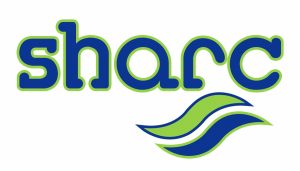3D Printing Productivity Drives R&D at Renault Sport F1
Formula One racing is an endurance engineering sport fuelled by relentless innovation. Teams work tirelessly to reach and beat an ever-evolving standard of peak performance, and the spirit is no different at Renault Sport Formula One Team. There, the research and development machine never stops and the contributions of technical partners play a crucial role in helping the organization reach its targets.
“Race after race, new components made of complex composites and aerospace alloys see the light after surviving a harsh selection in the R&D and simulation labs,” explains Renault Sport Formula One Technical Director, Nick Chester. “At the end of a racing season, we expect our race car to be in excess of a second per lap quicker than when we started, and our technical partners have to survive the same ruthless selection. We aren’t interested in relationships that don’t bring value in our quest for performance.”
This requirement for ongoing innovation and active collaboration is the foundation for Renault Sport Formula One Team’s choice of 3D Systems and its array of 3D printing technologies and expertise.
An R&D partnership
Based in Enstone, United Kingdom, the Renault Sport Formula One Team has been using 3D Systems’ technologies in its core operations since 1998. As an early adopter of 3D printing for prototyping, the racing team’s use of 3D printing has followed the trajectory of the technology itself. Early uses included function and fit design verification as well as jigs and fixtures for accurate assembly. As the partnership between the two companies has grown, 3D Systems’ application engineers have helped Renault Sport Formula One Team understand and seize the opportunities, materials and methodologies available to them. The team’s ability to feed the voracious appetite of its wind tunnel facility is testament to the positive impact of its partnership with 3D Systems, as well as new innovation in on-car parts through 3D printing for investment casting and explorations in direct metal printing (DMP).
“The support the team has received from 3D Systems has evolved during our journey,” says Chester. “If we look back, you can see that, as material properties have improved, the team has been very keen to expand the application of rapid materials to more engineering challenges. The number of on-car components produced with additive manufacturing grows every year, with considerable benefits to the team in terms of design versatility and reduced production times and costs.”
The fleet of 3D Systems machines currently in use at Renault Sport Formula One Team includes six stereolithography (SLA) printers and three selective laser sintering (SLS) machines. Materials span from the Accura® range to build jigs and fixtures, fluid flow rigs, investment casting patterns, and wind-tunnel parts to DuraForm® PA and DuraForm GF for parts used on the car itself such as electrical boxes and cooling ducts. From match-making with materials to working through designs for greater efficiency, the partnership between Renault Sport Formula One Team and 3D Systems drives better performance both on and off the track.

A daily evolving racecar
Each year, Renault Sport Formula One Team designs and builds a new car responding to rule changes and the natural R&D cycle aimed at improving car performance. As an example of the challenges that Formula One regulations changes can entail, the 2017 season updates included larger and heavier tires, a wider front wing, a lower and wider rear wing and a higher diffuser, which meant no parts were carried over from 2016 to 2017. Once the racing season begins, the pressure only continues to escalate: sometimes there is only a week between races to deliver engineering changes. Varying from purpose-built circuits to bumpy and tortuous street tracks, each race presents engineers with its own challenges related to architecture, climate and asphalt type.
The team prepares relentlessly for each circuit’s unique challenges and uses what little downtime it has between races to deploy the fruit of its research on cars and equipment. It is not difficult to envisage how the speed and accuracy of 3D printing can add value to this development race. “The car is evolving daily during the racing season,” says Patrick Warner, Advanced Digital Manufacturing Manager at Renault Sport Formula One Team. “We require new components at every track and the benefits of additive manufacturing is becoming increasingly relevant.”

Rapid design validation
From the beginning, 3D printing for rapid prototyping proved a useful capability in a sport where internal racecar components are tightly packed and constrained by aerodynamic surfacing paneling. Renault Sport Formula One’s aerodynamicists quickly saw the potential of 3D printing technology for fit and function testing as they saw the complexity of the components 3D Systems’ machines could produce. With this awareness, the use of 3D technology began to grow, gradually expanding from rapid prototyping to wind tunnel model manufacturing.
“In wind tunnel testing, aerodynamics is an empirical science,” says Warner. “We design and compare new ideas and choose directions to follow. The more ideas we can compare and evaluate, the more successful we will be on the track.” In terms of part quality, machine uptime and throughput, 3D Systems’ SLA is a boon to the racing team’s productivity.
Driving aerodynamics through wind tunnel growth
The Aerodynamics Department at Renault Sport Formula One has grown significantly in recent years and it now includes 120 staff between aerodynamicists, wind tunnel technicians and model makers. Much of this growth has been spurred by the increased use of 3D Systems’ additive manufacturing technologies, according to Warner. He cites the ability to incorporate complex internal channels into the design of wind tunnel test models as a key impact of using 3D Systems’ technology and the opportunity that creates to take more pressure readings.
“The car model in the wind tunnel features a complex network of pressure sensors,” says Warner. “Before SLA technologies were available, these were positioned by drilling pressure tappings into metal and carbon fiber components. The ability we now have to produce complex solids with intricate internal channels has revolutionized our ability to place these sensors and increase their numbers. It’s an aerodynamicist’s dream come true.”
Warner estimates that wind tunnel testing alone requires the production of 600 additive manufactured parts per week, all accomplished by a five-person engineering team in Advanced Digital Manufacturing (ADM).
“We couldn’t come close to doing that conventionally,” says Warner. “We’d need a machine shop the size of a small city. 3D Systems gives us a one-stop shop. They have the equipment we require, the materials we require, and the expertise we require from application engineers who provide us with service instantly.”
Manufacturing speed and precision for on car parts

In terms of productivity and efficiency, 3D printing has dramatically increased Renault Sport Formula One Team’s ability to respond to the challenges presented from consistently new racing environments. Using SLA and SLS, complex jigs and fixtures, fluid flow rigs and on car components can be produced in hours rather than weeks, making 3D technologies ideal for the logistical challenges of Formula One racing.
In addition to the massive quantities of components tested monthly in the wind tunnel, Renault Sport Formula One builds a number of racecar parts directly. “3D Systems’ technologies have powered an effective new manufacturing process that enables us to reduce both cycle times and cost, adding invaluable benefit to the team,” says Rob White, Chief Operating Officer at Renault Sport Formula One. “On one hand, we enjoy the ability to test multiple iterations of the same part in the wind tunnel, while on the other we see the number of sintered components in the actual car grow every year.”
3D printing has helped the team achieve lighter-weight parts that increase speed and fuel efficiency as well as accurate and informative flow testing for better engine performance and reduced wear and tear. Once a design is complete, it is sent along with its material selection to the team’s ADM Department for production. Using SLA and SLS, complex car components can be produced faster than ever, and in some cases the part is ready for inspection before the drawing has even passed through the system.
3D printed investment casting patterns using SLA are also gaining traction at Enstone for applications such as gearbox and suspension components, allowing the team’s engineers to be more creative in part design now that restrictions on permissible complexities have been removed. Because the SLA process is so accurate, time is saved both on frontend pattern production as well as on backend proof machining for the finished casting.
New avenues of development
The benefits of 3D Systems’ technologies, expertise and services connect deeply with mission-critical priorities for Renault Sport Formula One Team, including innovation, productivity and improved accuracy and precision. For Bob Bell, Chief Technology Officer at Renault Sport Formula One Team, 3D Systems is more than a technology supplier: the two companies have a true partnership that delivers results and vast future potential.
“Our partnership with 3D Systems has made us more productive and efficient over the last 20 years or so,” says Bell. “It’s opened up new avenues of development and usage that I expect will only escalate in the future.”




















